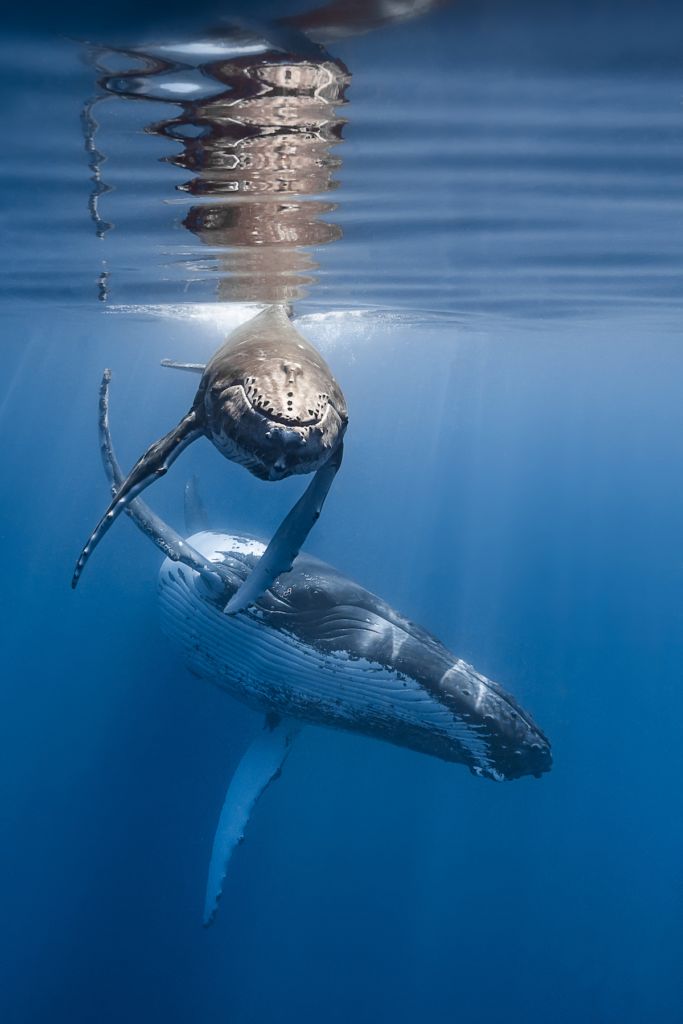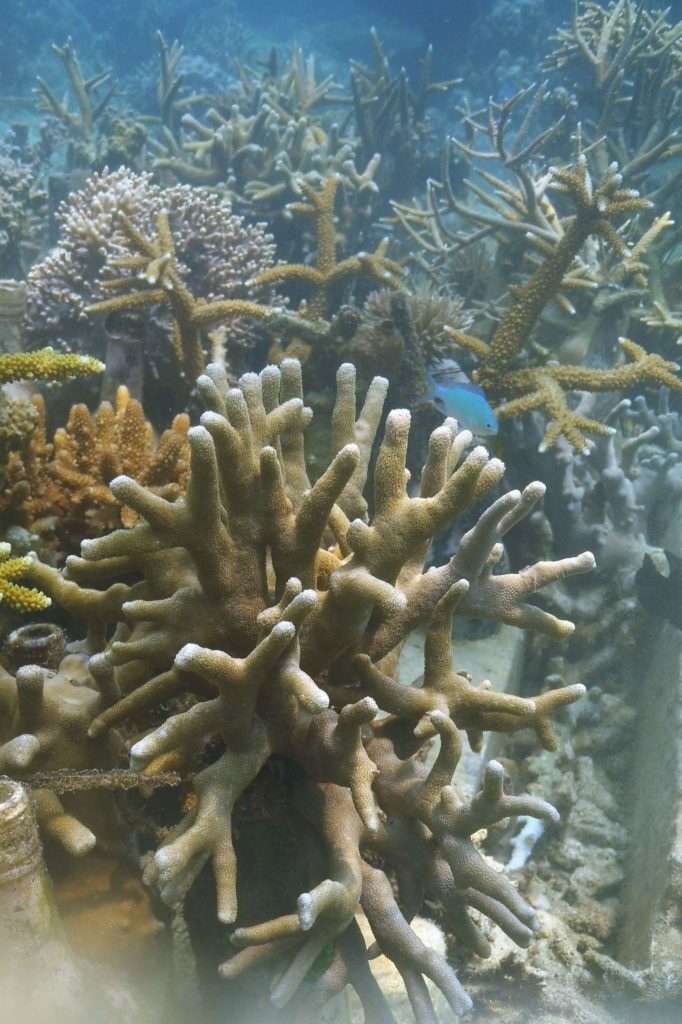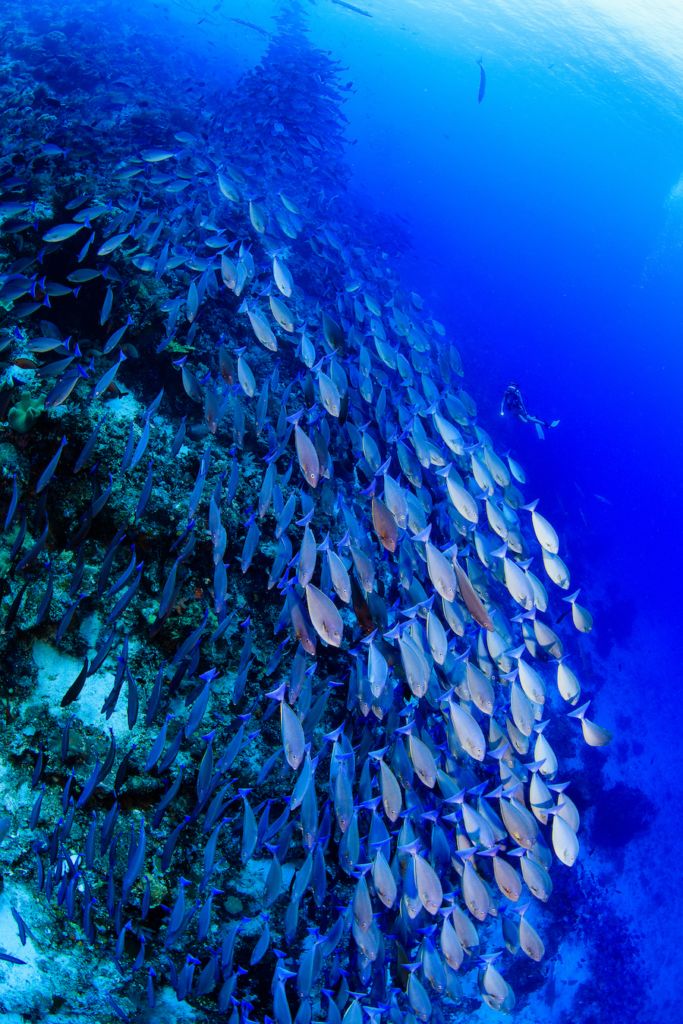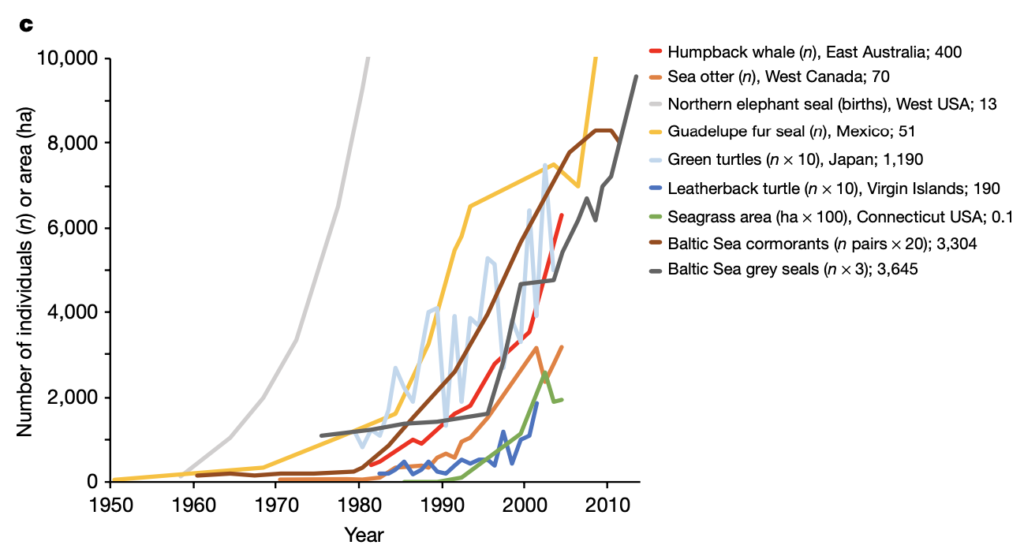- Ocean
- Science
- SDGs
- article
- climate crisis
- nature
- ocean
- planet
- solutions
Rebuilding Marine Life
Read our takeaways from the 2020 paper « Rebuilding Marine Life », exploring paths to efficiently restore the ocean and its resilience by 2050.
Duarte et al., Rebuilding Marine Life, Nature, April 1st 2020

Marine habitats are highly resilient
The World has entered the 6th mass extinction of biodiversity. However, the ocean presents a great capacity of recovery and resilience. This, according to scientists, is a great source of hope.
The authors give different examples demonstrating the high resilience of marine species. Indeed, they are capable of recovering from very stressful events and population decline:
- The Humpback Whale population has grown from a few hundred animals in 1968 to more than 40,000 currently.
- The coral reefs of the Marshall Islands have fully recovered from 76 megatons of nuclear tests in 1958.

We can’t achieve SDG14 without restoring marine habitats
The Sustainable Development Goal n°14 aims to « conserve and sustainably use the oceans, seas and marine resources for sustainable development”.
Importantly, scientists affirm that this goal is not reachable if the restoration of marine habitats is not implemented at scale. However, this solution has to be parallel to the significant reduction of greenhouse gases.

Reversing the decline of marine life is an achievable goal
The authors give many examples of resilience among marine habitats and species. This is the reason why they state that it is possible to restore the ocean to its full health by 2050.
In addition, they propose a list of solutions that we can engage in:
- the reduction of greenhouse gases
- the protection of threatened species, under IUCN lists for instance
- the implementation of large and well-enforced Marine Protected Areas
- the small-scale restoration of marine habitats.

Sample trajectories of recovering species and habitats from different parts of the world. in. Rebuilding Marine Life, Nature 2020.